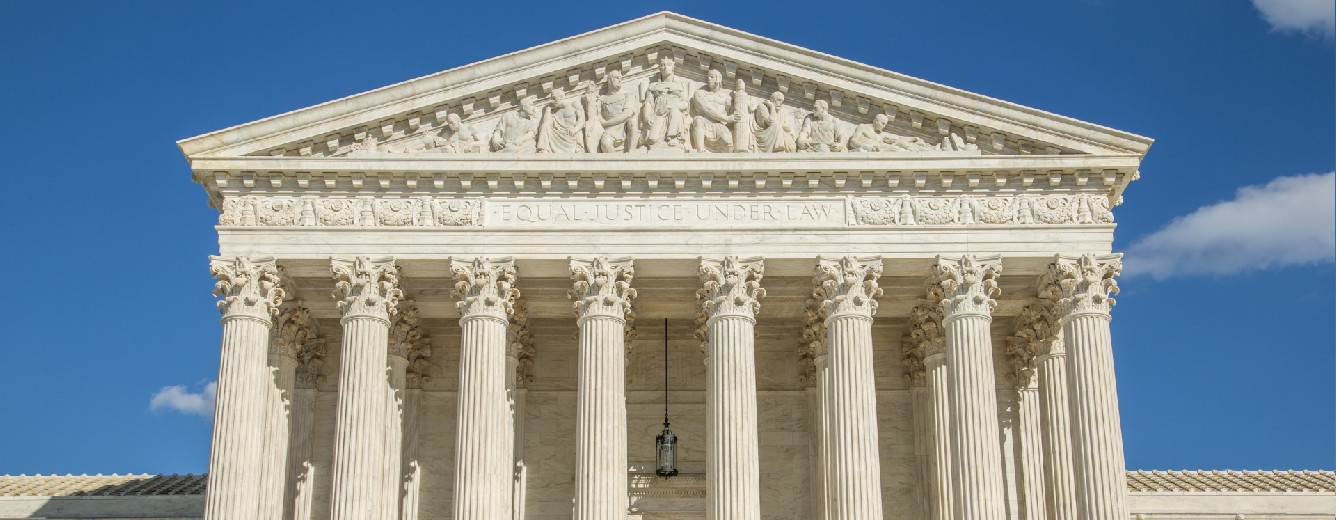Amidst the ongoing discussions about the recent pivotal Supreme Court cases: Loper Bright Enterprises, et al v. Gina Raimondo, Secretary of Commerce, et al. and Relentless, Inc. v. Department of Commerce, we explore its potential impact on the federal government contracting community. While awaiting the final decision, understanding the nuances and possible consequences of this case is crucial for our industry.
1. Case Background:
These companion cases were argued in the U. S. Supreme Court on January 17, 2024. These cases are potentially consequential as the court can overturn 40 years of established administrative procedure law.
2. Key Issues at Stake:
The Loper and Relentless cases challenge the ability of the National Marine Fisheries Service (NMFS) to establish and enforce a procedural requirement they implemented based on their interpretation of the Magnuson-Stevens Fishery Conservation and Management Act of 1976. This regulation mandates that Atlantic herring fishermen pay approximately $700/day for a monitor to observe the fishing techniques and catches taking place on board each fishing vessel. They allege that the act does not authorize NMFS to create “industrial-funded monitoring” requirements and further that NMFS did not follow proper rulemaking procedures when it established the regulation in question.
3. The Chevron Precedent:
The precedent in question was established by the Supreme Court in a 1984 decision. That case is CHEVRON V. NRDC, 467 U.S. 837 (1984). The facts of this case are briefly worth noting. The Reagan EPA modified the procedural definition of the term “source”, as it related to “new source review” under the Clean Air Act amendments of 1977. This procedural modification limited the scope of the term “source.” It allowed facilities with stationary air emission sources to more broadly apply the term so that it captured emissions from an entire industrial complex instead of from each building or smokestack that was emitting air pollutants.
The Supreme Court, in a unanimous decision, overturned the District of Columbia Court of Appeals decision, which had decided that the EPA’s interpretation of the new Clean Air Act amendments was improper.
The Supreme Court’s opinion created what has been known for the past 40 years as the “Chevron deference.”
The court held that courts must defer to the authority of the administrative agency’s interpretation of a statute whenever both the intent of Congress was ambiguous and the agency’s interpretation is reasonable and permissible.
This test is a two-step test. The first question is: was there an unambiguous expression of Congressional intent within the language of the statute? If so, the court must yield to that intent. However, if not, the court goes to Step 2: …Was the agency’s application of the statute based on a “reasonable” interpretation of said statute? If not, then the agency’s interpretation will likely be deemed impermissible. The court went on to say that “reasonability” is determined by the specific factual circumstances in the case.
4. Long-standing Impact on U.S. Administrative Law:
For the past 40 years, this decision has been deeply ingrained in US administrative law.
I was practicing law as a civilian for the U.S. Navy at the time of this decision and remember it well, because of the huge implications it had for regulatory agencies.
5. Potential Irony in Supreme Court’s Decision:
It would be ironic if the current Supreme Court overturned a unanimous decision which was written by a Supreme Court which was considered “conservative,” especially in its rulings on administrative law issues.
6. Expected Decision and Its Implications:
The decision in this case is expected by the end of June 2024. It will be limited to federal administrative law principals, as no state agency regulations are at issue.
The impact on our industry will be negligible and will take place over several years. Going forward new regulations will potentially have to meet a new “test,” which may be more narrowly interpreted by courts, thereby giving federal regulatory agencies less power to broadly interpret Congressional intent in new statutes. Going backward, it will take new litigation, to challenge each current procedural law. I don’t see that a new Supreme Court decision will strike down every current procedural law, as the decision can only apply to the administrative procedure being challenged. As I said this could be a very lengthy process. New attempts at procedural law will be impacted and reviewed within the new decision, but they won’t impact regulations already “on-the-books.”
7. Conclusion:
At Scout, we’re keenly following the developments of pivotal Supreme Court cases, focusing on their implications for the Department of Defense environmental and engineering services community. We are here to provide updates and insights into these important legal shifts. For any queries or a deeper understanding of how these changes might affect your organization, feel free to reach out to us at hello@scoutenv.com.













